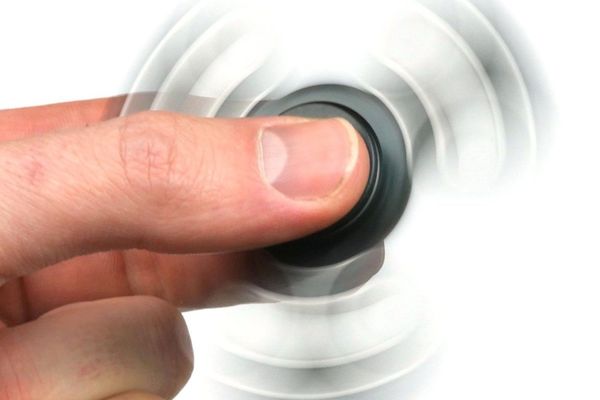Create a spinning toy
Build a simple spinning toy using cardboard, a plastic straw, a toothpick or blunt skewer, and beads; decorate it and observe rotation.



Step-by-step guide to build a spinning toy
How to Make a String Spinner Toy - Easy Spinning DIY for Kids! 🌀
Step 1
Gather all materials and place them on a flat table where you can work.
Step 2
Put a round cup or lid on the cardboard and trace around it to make a circle.
Step 3
Cut out the cardboard circle with scissors.
Step 4
Decorate the cardboard circle with markers stickers or crayons to make it bright and fun.
Step 5
Fold the decorated circle in half and then fold it in half again to mark the center point.
Step 6
Carefully make a small hole at the center mark that is big enough for the toothpick to pass through.
Step 7
Cut a 3 centimeter piece from the plastic straw with scissors.
Step 8
Push the straw piece through the center hole so that about half sticks out above and half below the cardboard.
Step 9
Tape the straw flat to the top of the cardboard so it cannot slide out.
Step 10
Push the toothpick or blunt skewer through the straw so it can turn freely inside the straw.
Step 11
Slide beads onto the toothpick so there is one bead above and one bead below the cardboard to act as weights.
Step 12
Trim or snap off any toothpick ends that stick out too far so the spinner is safe to touch.
Step 13
Place your spinning toy on a smooth flat surface and give it a flick to watch it spin and wobble.
Step 14
Take a photo or write about your spinner and share your finished creation on DIY.org
Final steps
You're almost there! Complete all the steps, bring your creation to life, post it, and conquer the challenge!


Help!?
If I don't have a plastic straw, toothpick, or small beads, what can I use instead?
Use a 3 cm piece of a smooth wooden skewer or pen refill for the plastic straw, a blunt skewer or short pencil stub instead of the toothpick, and buttons, washers, or small rolled-up modeling clay balls for the beads when you push the straw through the center hole and slide weights onto the axle.
My straw keeps slipping out or the toothpick doesn't spin freely — what should I do?
Make the center hole slightly smaller, firmly tape the straw flat to the top of the cardboard as the instructions say so it cannot slide out, and sand or widen the straw end a little so the toothpick can turn freely inside without binding.
How can I adapt this spinner activity for different ages?
For preschoolers pre-cut the cardboard circle and have an adult make the center hole and insert the straw while kids do the decorating, for elementary kids let them cut, fold, and assemble with supervision, and for older kids challenge them to add layers, balance multiple beads, or experiment with different cup sizes for larger circles.
How can we enhance or personalize the spinner after finishing?
Personalize the cardboard circle by drawing bright, high-contrast patterns or adding stickers during the decorate step, glue on a second layer to change weight and wobble, or attach extra beads to experiment with spin speed and then take a photo to share on DIY.org.
Watch videos on how to build a spinning toy
5 Fun and Easy SPINNING TOYS You Can Make!
Facts about rotational motion and simple physics for kids
🌀 A spinning top stays upright because of angular momentum — spinning creates a stabilizing effect that resists tipping!
📦 Cardboard is lightweight, easy to cut, and surprisingly strong for making quick DIY toys and models.
🔬 Gyroscopes use the same spinning principles as tops and have been used in ships and spacecraft for navigation.
🔁 The faster you spin a toy, the longer and steadier it usually spins — speed helps stability.
🧷 Tiny friction at the pivot (like a straw or toothpick) is what eventually slows a spinner — smoother pivots = longer spins.
How do I build a simple spinning toy with cardboard, a plastic straw, a toothpick, and beads?
What materials and tools do I need to make a spinning toy at home?
What ages is this cardboard spinning toy suitable for?
What are some safety tips and variations to try with this spinning toy?


One subscription, many ways to play and learn.
Only $6.99 after trial. No credit card required



